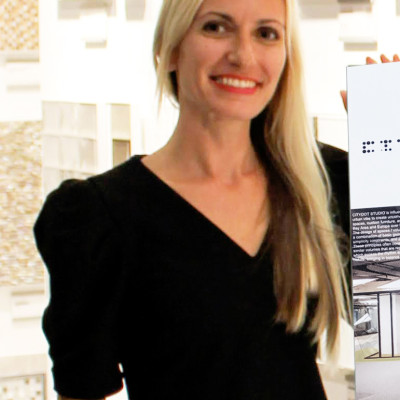5 key facts about this project
The project stands out for its innovative approach to spatial organization, encouraging not only movement but also interaction among its inhabitants. The design leverages a combination of open and enclosed spaces, allowing for diverse uses throughout the day. Natural light plays a critical role in the design, with large windows and strategically placed skylights that illuminate the interior while providing a connection to the outside environment. The careful consideration of light enhances the overall atmosphere and functionality of the space, making it comfortable and inviting.
In terms of materiality, the project employs a carefully selected palette that speaks to its context and purpose. Materials such as reinforced concrete, wood, and glass are predominant, each chosen for their durability and aesthetic value. The use of concrete offers structural stability and a modern aesthetic, while wood provides warmth and texture, creating a welcoming environment. Glass elements are used to foster transparency and visual connectivity, effectively bridging the gap between interior and exterior spaces.
Unique design features further contribute to the project’s identity. The incorporation of green roofs and landscaped terraces encourages biodiversity and provides recreational space for inhabitants. This not only enhances the architectural design but also promotes environmental sustainability by managing rainwater and reducing heat islands. The seamless integration of nature within the urban fabric serves as an important reminder of the relationship between built environments and ecological systems, infusing the project with a sense of purpose beyond mere functionality.
The layout of the interior spaces reflects a clear understanding of user flow and accessibility. Thoughtfully designed circulation paths guide visitors through the space, while flexible room configurations allow for adaptability based on varying needs. Areas for collaboration and creativity are interspersed with quieter, more private zones, catering to different uses throughout the day. This attention to user experience ensures that the architecture serves as a responsive platform for community activities.
In essence, this architectural project epitomizes a commitment to delivering a functional and aesthetically pleasing environment that prioritizes user experience and community engagement. The resulting design is not merely a building but a vibrant space where interaction and creativity can thrive. This thoughtful consideration of space, material, and context positions the project as a valuable addition to the urban landscape.
For those interested in exploring this architectural endeavor further, it is recommended to delve into the architectural plans and sections to appreciate the meticulous design decisions at play. Engaging with the architectural ideas encapsulated within this project can provide deeper insights into its innovative approaches and functional attributes, underscoring its role as a significant asset to the community it serves.


 Savina Vankova Kyurkchieva,
Savina Vankova Kyurkchieva, 























